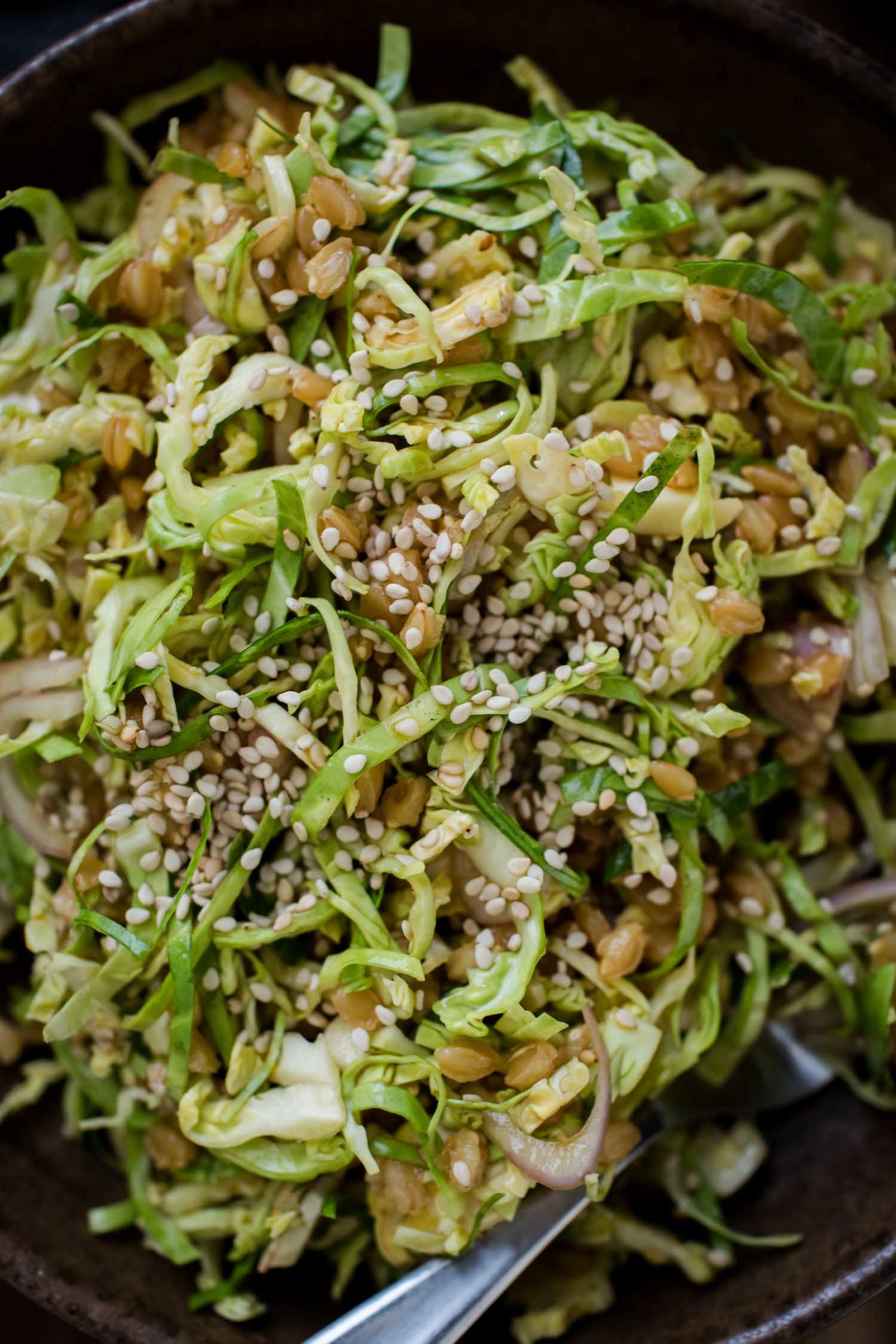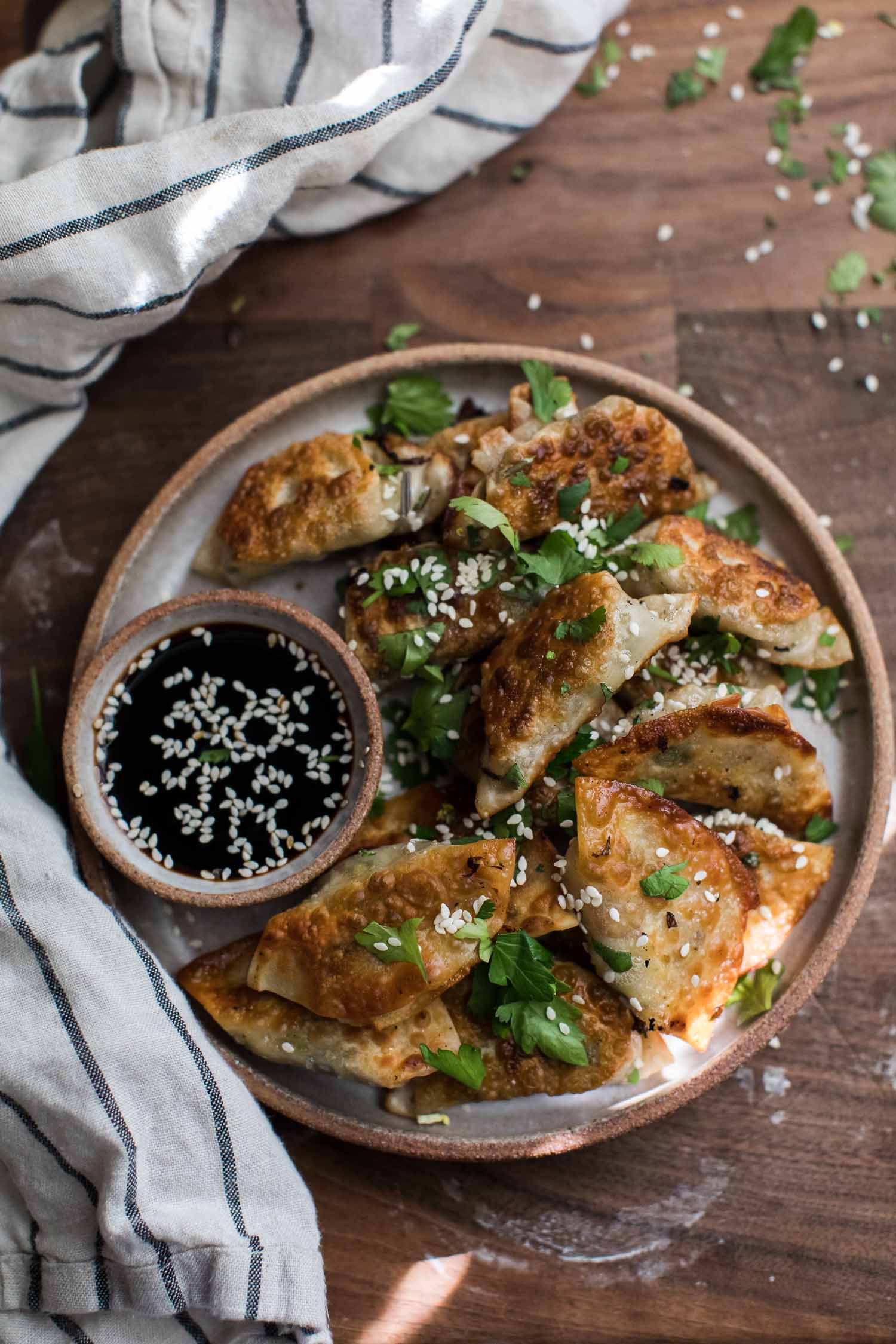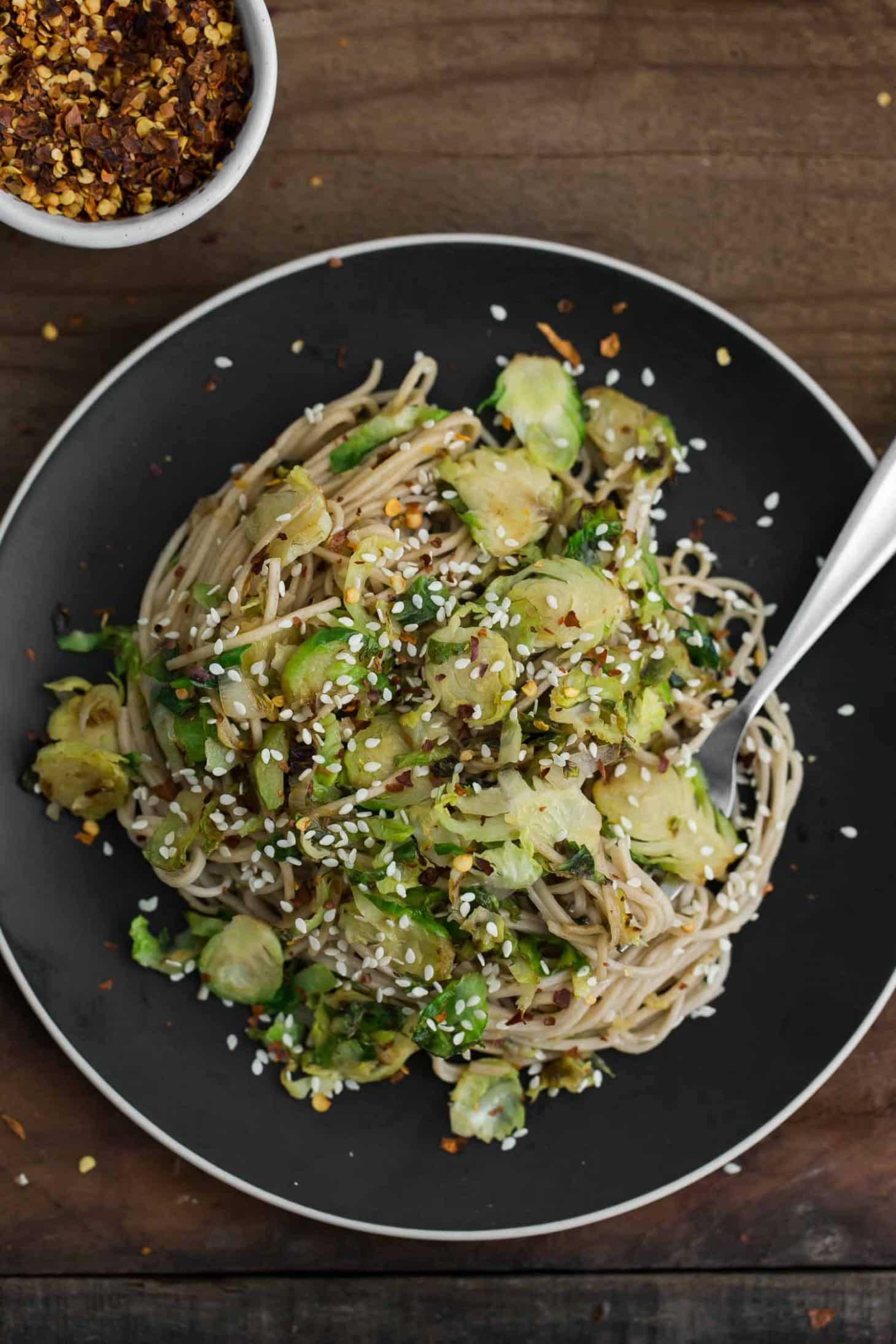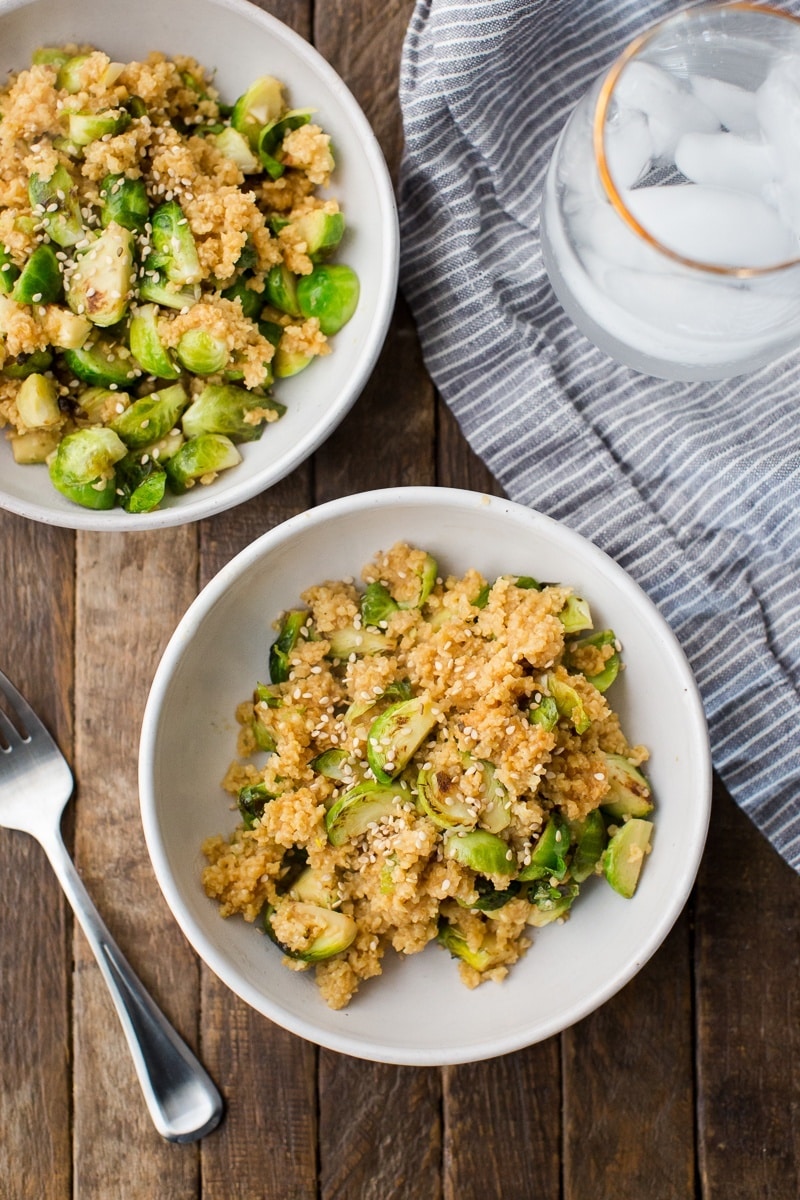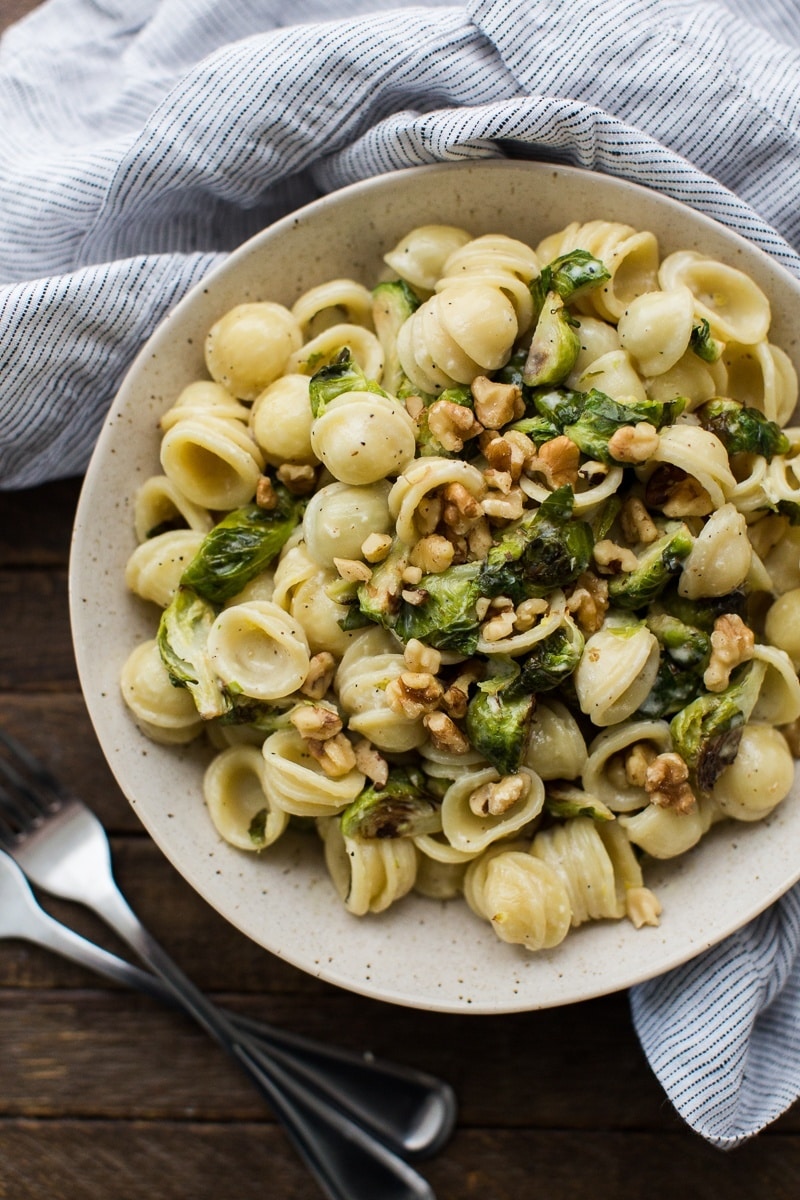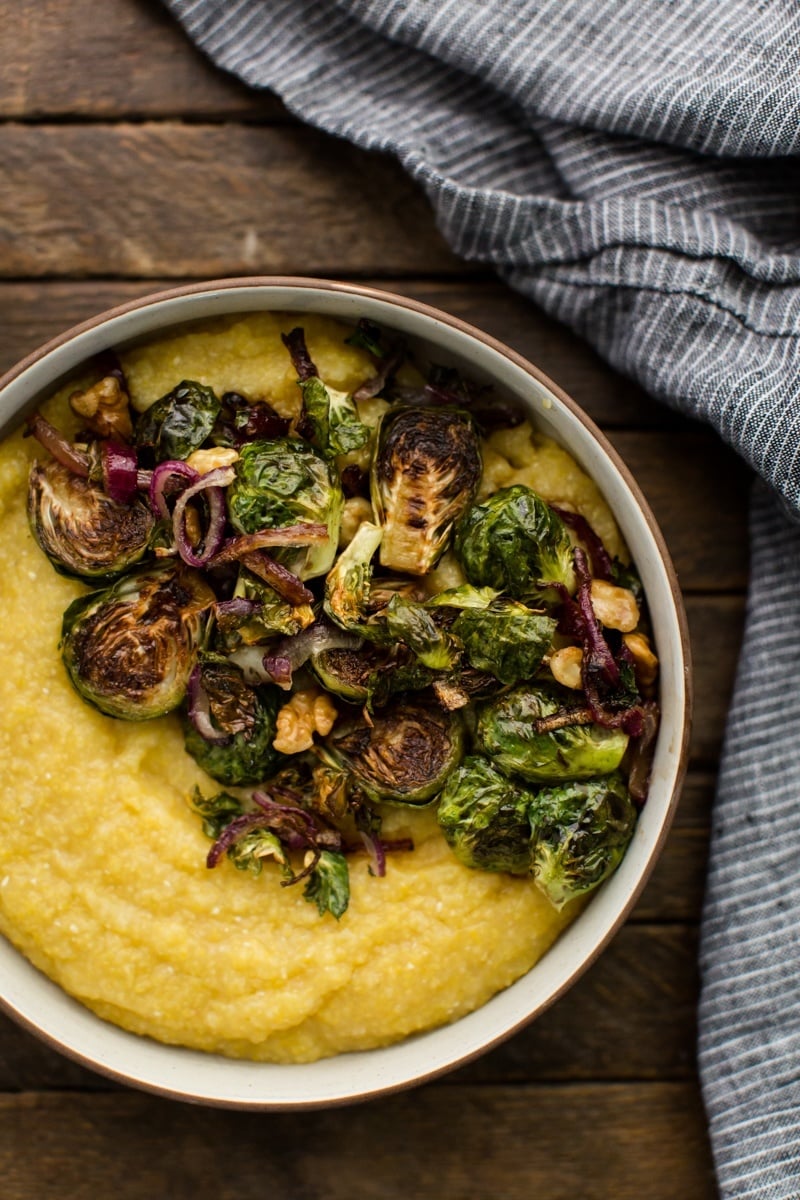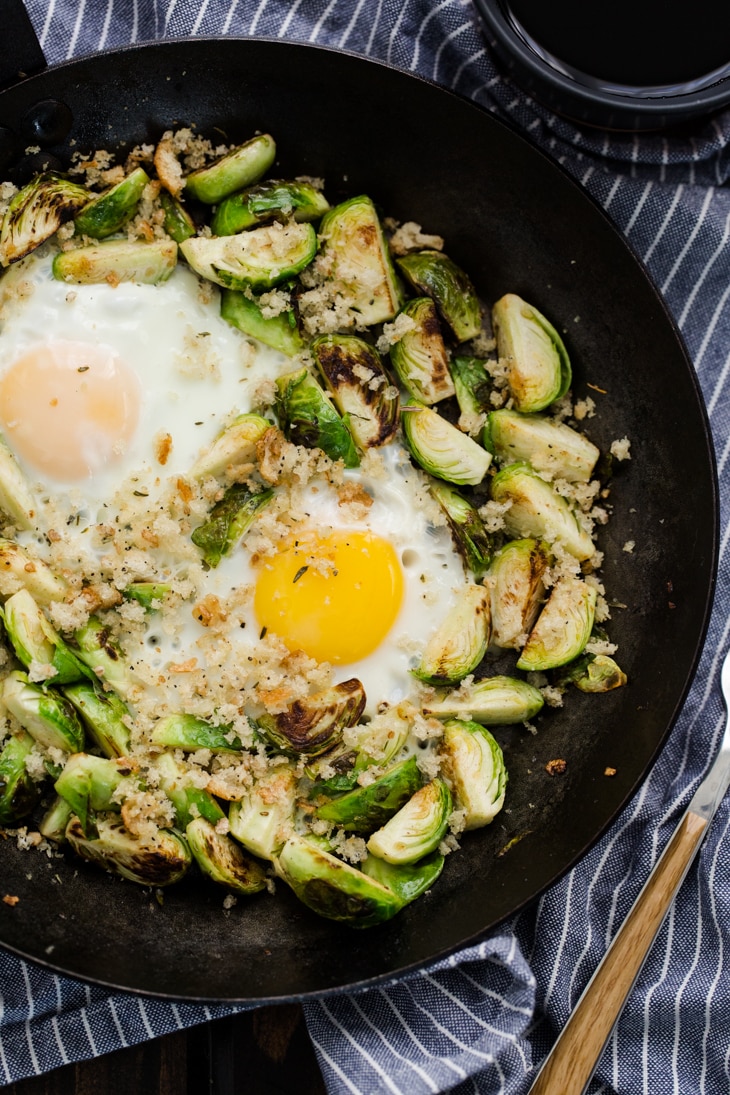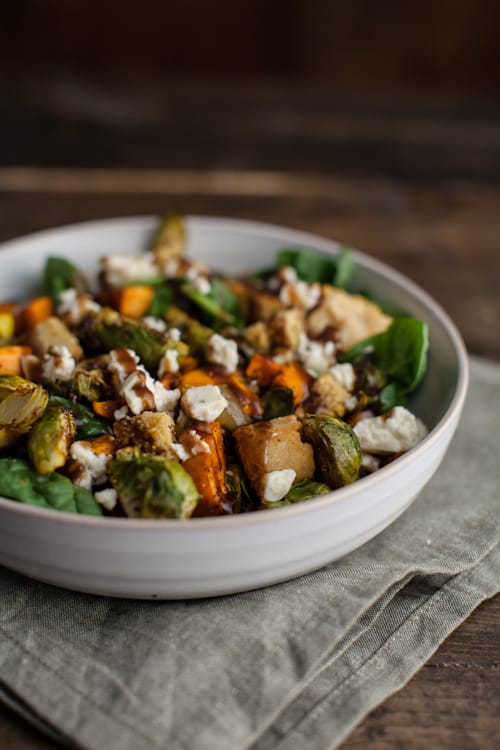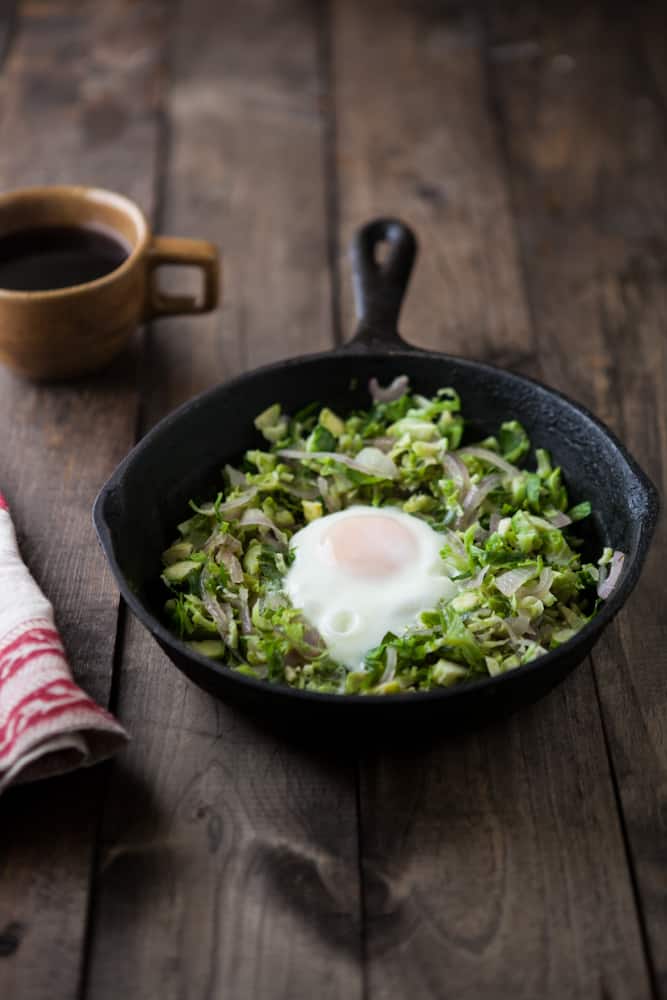
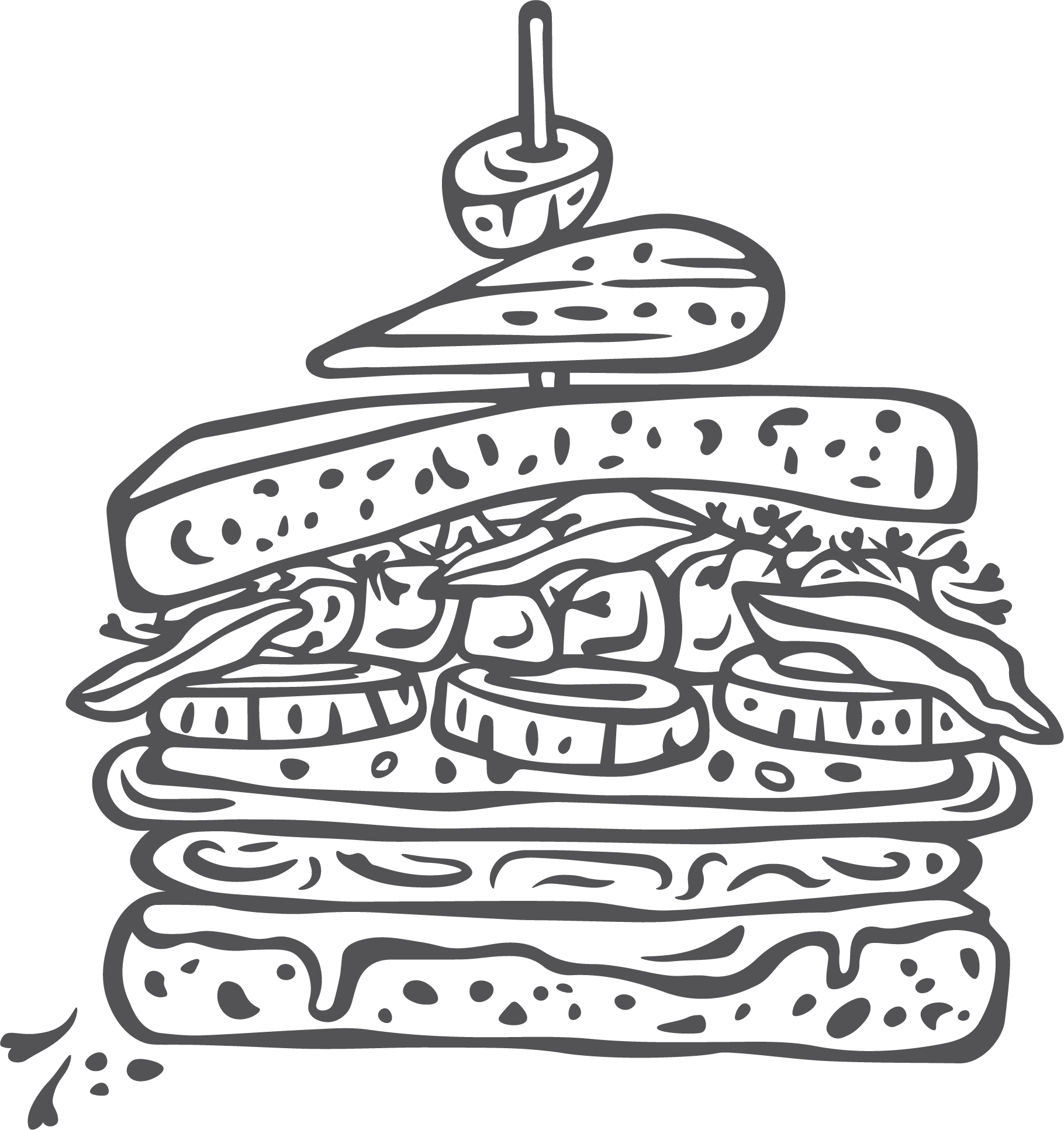
Brussels sprouts are a type of cole crop. In fact, it is the same species as cauliflower, broccoli, and cabbage (Brassica oleracea), but a different cultivar. The heads of this vegetable grow on a tall stalk and are plucked off the stalk (occasionally you can buy them on the stalk.) The flavor of Brussels sprouts can be a bit overwhelming (it is in the cabbage family) but can be a real treat during the cooler months. However, be sure not to overcook them- their prime flavor is when they are cooked just right.
Brussels sprouts absolutely delightful when roasted with a little olive oil and salt. This vegetable also works well shredded in salads, cooked in gratins, and is the perfect companion for your Thanksgiving meal. If you find yourself with an abundance of Brussels sprouts, they freeze well. Simply blanch for three to five minutes (depending on size), dunk in cold water, and once cool, place in a freezer safe container. It is advised to cut an "X" in the base since the leaves cook faster than the base.

Fall/Winter
Brussels sprouts can be roasted, sautéed, steamed, or eaten raw. If eating raw, shred into salads or coleslaws.
Look for Brussels sprouts on the stalk, often the freshest or Brussels that have a solid green color, few blemishes, and are firm. If buying from the stalk, remove from the stalk before storing.
Store the Brussels sprouts in an open container in your produce drawer. Brussels sprouts will keep for a few weeks after being picked. The outer leaves can stay on the spouts and be removed before cooking.
There are quite a few (over 100!) Brussels sprout varieties but for the most part, this doesn't change how they are cooked.
